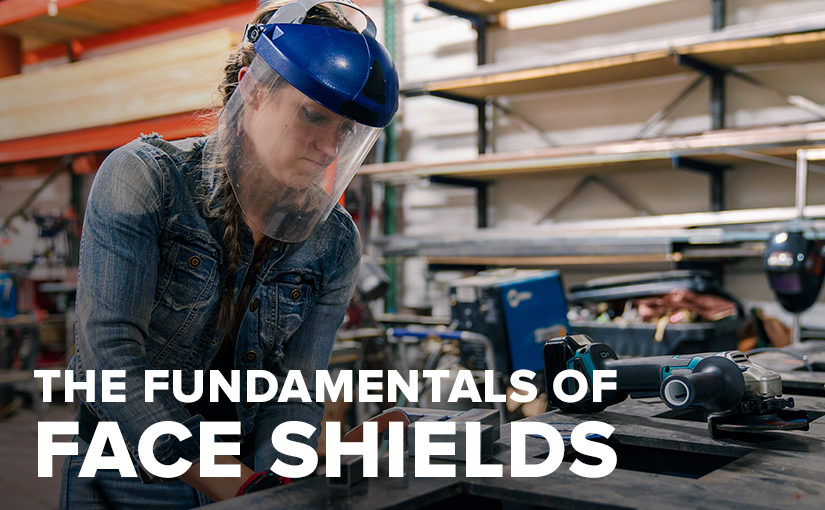In any workplace, there are a number of hazards that an employee might encounter and be injured by. Among these threats are several dangers to the eyes and face. But Prevent Blindness America has found that these injuries are some of the most preventable. In recent years, they have identified 86,000 work-related accidents that could have ended with a serious eye injury but were prevented by the proper use of eye protection. While many professionals are actively promoting the use of safety eyewear, civic and manual labor professionals often need the added protection of a face shield. While you should never wear a face shield by itself, knowing when to and what kind of face shield to wear for a task is essential when picking out protection for your employees.
When to Wear
OSHA requires all employers to, “ensure that each affected employee uses appropriate eye or face protection when exposed to eye or face hazards from flying particles, molten metal, liquid chemicals, acids or caustic liquids, chemical gases or vapors, or potentially injurious light radiation.” But when exactly is the additional protection of a face shield necessary?
Put simply, face shields should be worn when safety eyewear offers insufficient protection for the potential hazards present in a situation. Since face shields do not seal in the face, safety eyewear should always be worn underneath. This ensures that workers are protected from hazards slipping behind the shield and into their eyes. See our blog about the basics of preventing eye injury for more information on safety glasses and goggles.
What to Wear
Three options to consider when picking out face shields for your worksite include window material, headgear, and operation design:
- Window Material – There are three main materials used to make face shield windows: polycarbonate, Lexan, and wire mesh. Polycarbonate and Lexan shields are both advanced plastics and protect against impacts, but Lexan is more scratch resistant. Wire mesh windows offer less protection against fine particle and liquid splash hazards, but they never fog up.
- Headgear – Wearing a face shield shouldn’t interfere with other protective equipment. When you need to be wearing head protection as well as a face shield, you can attach the shield to a hard hat with a bracket. Otherwise, face shields can be attached to their own, specialized headgear for a comfortable, safe fit.
- Operation Design – Being able to operate safety equipment with minimal interruption to workflow is an important detail to consider. Face shields can operate in two ways: as removable windows or lift-front visors. Removable face shields are designed to be simple to replace while lift-front visors make it quick and easy to raise and lower the face shield during a task.
US Standard Products has a wide selection of face shields that provide safer and smarter protection for manual labor and civic maintenance professionals, including welders. Visit our website to download our free catalog and start exploring your options. To stay up-to-date on the latest workplace safety news and trends, follow US Standard Products on social media:

